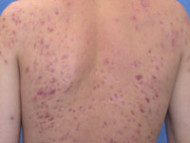What is acne scarring?
Scarring is a widely recognised sequelae of acne, an inflammatory dermatological disorder that frequently affects younger adults and can persist for years. Acne favours the face and upper back but can also develop in other sites with well-developed sebaceous glands.
Scarring refers to the fibrous process in which new collagen is laid down to heal a full-thickness injury, such as cutaneous inflammation in acne.
Ice pick scarring on the cheeks Mild atrophic acne scarring on the back - there is also some perifollicular elastolysis Rolling scars over the cheek Post inflammatory pigmentation after facial acne in skin of colour True keloids on the shoulders post acne in skin of colour Severe atrophic scarring from back nodulocystic acne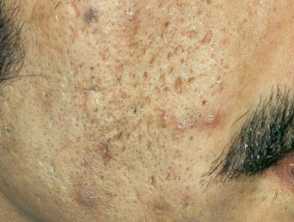
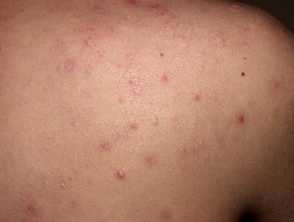
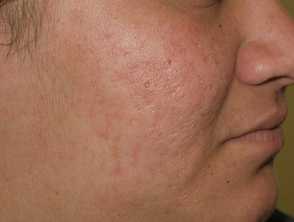
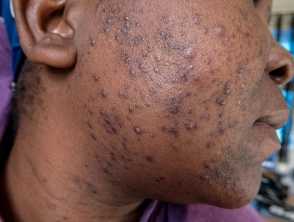
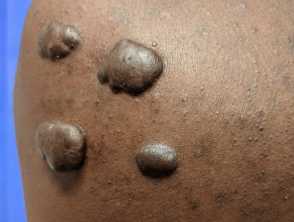
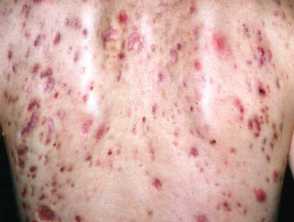
Who gets acne scarring?
Epidemiological data on the prevalence and incidence of acne scarring varies. The duration and severity of acne often correlates to the degree of resultant scarring.
Scarring is more common in patients with moderate to severe acne vulgaris, or in acne subtypes such as nodulocystic acne, acne conglobata, and acne fulminans. Scarring can also be exacerbated in acne excorie due to picking or squeezing of primary lesions.
Some patients may have a predilection to scarring compared to others. For example, research suggests that smoking increases the risk of more severe acne scarring.
What causes acne scarring?
The formation of scars is a normal reaction of the skin in response to inflammation or injury. Further injury such as ‘picking’ at active acne lesions can also increase the likelihood of developing acne scars.
The majority of acne scars result from an overall inflammatory response causing net destruction of collagen fibres in the dermis in an atrophic scar. Underlying fibrosis can also occur. The consequence of a net gain of aberrant production of collagen in turn causes hypertrophic or keloid-type acne scars.
What are the clinical features of acne scarring?
The majority of acne scars are atrophic. Atrophic scars can be classified by three main types: ice-pick scars, rolling scars, and box-car scars.
- Ice-pick scars: the most common type of atrophic acne scars (60–70%). These are narrow, deeper than they are wide, and V-shaped with a sharp edge extending downwards into the deep dermis or subcutaneous tissue.
- Boxcar scars: the next most common type of atrophic scars; wider in size, round or oval shaped depressions with distinct edges.
- Rolling scars: wide, with a sloping edge that can be smoothed out if stretched.
- Perifollicular elastolysis: 2-4 mm hypo pigmented atrophic scars centred around hair follicles; most common on the back and chest
A secondary anetoderma can sometimes form after acne. This refers to a depression in the skin due to the elastic tissue within the dermis that is lost.
Less commonly, acne scarring can result in a keloid or hypertrophic scar. A hypertrophic scar is the same size as the acne lesion that caused it, while a keloid scar is an excessive scar formation often larger than the causative lesion. They occur more frequently along the jawline, chest, and upper back.
‘Hybrid scars’ exhibit multiple physical characteristics, such as pigmentation or erythema, alongside being atrophic or hypertrophic.
Other associated skin changes
Postinflammatory skin colour changes, a common side effect of acne lesions, may arise prior to or in conjunction with acne scar formation. These can include erythema, hyperpigmentation, and hypopigmentation.
- Postinflammatory erythema (more common in lighter skin) is thought to relate to microvascular changes and epidermal thinning of the skin during wound healing.
- Postinflammatory hyperpigmentation (more common in darker skin types) occurs due to the deposition of melanin within the keratinocytes of skin that had recent inflammatory damage.
Colour changes associated with acne often improve with time, however this may take months or longer.
How do clinical features vary in differing types of skin?
Postinflammatory hyperpigmentation and keloid scarring is more common in skin of colour following acne lesions. Keloid scars can continue to evolve over time.
What are the complications of acne scarring?
- Significant psychological effects.
- Potential side-effects from attempted treatments eg, postinflammatory erythema or hyperpigmentation, infection, or further scarring.
- Recurrence of hypertrophic or keloid scars.
How is acne scarring diagnosed?
Acne scarring is diagnosed clinically based on a history of acne and scar appearances. If there is diagnostic uncertainty (eg, an evolving hypertrophic or keloid scar), a biopsy may be considered.
What is the differential diagnosis for acne scarring?
- Other causes of scarring.
- Skin lesions can sometimes mimic keloid and hypertrophic scars, such as some skin tumours, cutaneous squamous cell carcinoma, cutaneous pseudolymphoma, lobomycosis, and morphoea.
What is the treatment for acne scarring?
Makeup may be helpful for disguising acne scars, particularly those on the face.
Treatments may also improve the appearance of acne scarring. Active acne should be treated prior to commencing scar management.
An individualised approach to treatment is required based on the size, depth, nature, and location of acne scarring; the patient’s baseline skin type; and their concerns, goals, and budget. More than one type of treatment can be used as part of a multi-modal approach to correct scar colour, texture, and volume.
Resurfacing treatments
Resurfacing procedures aim to blend acne scars into the surrounding skin by removing epidermis to smooth out scar edges, stimulating growth of new cells, and promoting skin remodelling. These may be best used for more superficial acne scars. Multiple treatments may be required for best results.
- Chemical peels — superficial, medium, or deep peels with various chemicals.
- TCA CROSS (trichloroacetic acid chemical reconstruction of skin scars) — a specific chemical peel technique involving the application of high strength (65–100%) TCA.
- Dermabrasion — physical resurfacing of the skin with a use of tools.
- Laser resurfacing — ablative and non-ablative fractionated lasers.
- Skin needling — involves thousands of micro-punctures to the level of the mid-dermis to achieve uniform pinpoint bleeding of the skin and promote scar tissue modulation and remodelling. This is also known as ‘collagen induction therapy’ or ‘needle dermabrasion’.
Lifting procedures
Lifting procedures are used to improve the appearance of atrophic scars with volumetric filling of underlying soft tissue loss.
- Dermal fillers — volumising; injected directly under depressed atrophic scars (eg, hyaluronic acid implant, collagen replacement therapy, fat grafting).
- Subcision — a surgical technique in which the fibrous scar band under the targeted scar is divided, allowing the skin to return to its normal position.
Excision
Excisional techniques allow for complete scar removal and might be useful for prominent, deep, fibrotic, or hypopigmented scars. These include:
- Punch or elliptical excision
- Punch grafting.
Treatment of hypertrophic or keloid acne scarring
Hypertrophic or keloid scars are particularly prone to recur even after apparently successful treatment. Options may include:
- Potent topical steroids applied under occlusion to the scar for several weeks
- Intralesional targeted steroid or bleomycin injections into the body of the scar
- Silicone gel dressings or sheeting applied for 24 hours a day for some months
- Skin needling
- Pulsed dye laser (PDL)
- Cryotherapy
- Surgical revision/excision.
How do you prevent acne scarring?
More inflamed acne lesions are more likely to scar. Timely appropriate treatment for acne during the active phase can reduce the incidence and severity of acne scarring and its associated psychosocial impacts.
What is the outlook for acne scarring?
Acne scars are usually permanent, although may improve spontaneously over time or with treatment.
